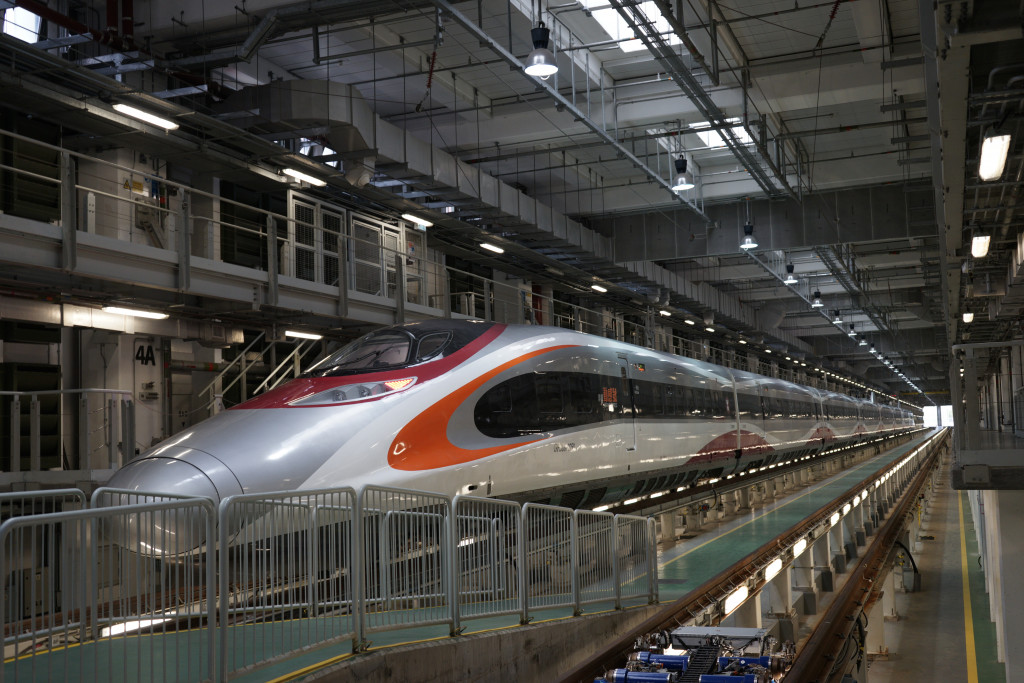Fancy a trip to exotic Shanwei? How about cosmopolitan Zhangpu?
If that’s where you most want to go, then surely you have already purchased your ticket on Hong Kong’s $84.4 billion (US$10.7 billion) express rail link, which at long last opens for business tomorrow.

Otherwise, forget it—it’s going to be cheaper and/or a lot faster to fly to most of the 44 mainland cities and towns to be served by the new rail line, leaving one to wonder why this already leaking, much-delayed and massively expensive boondoggle was ever conceived, let alone constructed, in the first place.
Heralded as a marvel of engineering and a galloping symbol of Hong Kong’s greater connectedness to the motherland when ground was first broken on the 26-kilometre (16-mile) link in January of 2010, the runaway project now stands as a monument to waste and hubris.
It has also forced Hong Kong to cede territory and legal authority to mainland agents stationed in the West Kowloon terminus in clear violation of the Basic Law.
And that this passive surrender of the rule of law to a central government notorious for unwarranted detentions and forced confessions is an appalling breach of our mini-constitution is not just the irredeemably biased view of one off-the rails, yellow-ribbon, China-bashing Hong Kong Free Press columnist.
It’s also the official stance of the Hong Kong Bar Association as well as the conviction of all those in this city who want to believe, against mounting evidence, that “one country, two systems” still means what it says.
Let’s hope that the people of Hong Kong will never witness the illegal detention of the likes of Joshua Wong Chi-fung, now the international face of the city’s ongoing quest for full democracy—or, for that matter, of callow extremists such as Andy Chan Ho-tin, founder of the Hong Kong Nationalist Party, which calls on Hong Kong to break away from China and declare its independence.

Even if those very real fears are never realised, however, we are still left paying for a railway costing more than HK$3.2 billion a kilometre that turns out to be a boon only if you are travelling to Shanwei (located in eastern Guangdong province), Zhangpu (in southern Fujian) or any of the other 11 mainland cities and towns along the line that do not have an airport.
It’s safe to say that these strikingly ordinary, aviation-deprived locations do not sit at the top of most Hongkongers’ bucket lists.
As for journeys to major cities such as Beijing and Shanghai, one would have to be daft (or perhaps possessed by some sort of train fetish) to choose the express rail as his or her preferred mode of transport.
As presently advertised, a high-speed rail trip from Hong Kong to Beijing will eat up nearly nine hours of your time and cost HK$2,478 for a return trip. The one-way flight, on the other hand, arrives in three hours and 25 minutes and the return ticket is more than HK$500 cheaper.
A trip to Shanghai by rail is an even worse deal, requiring eight hours and 17 minutes each way and costing HK$2,318 for a return ticket; the flight takes only two hours and 35 minutes each way and is more than HK$700 cheaper for the round trip. It’s the same lopsided story of more time and greater cost for travel to Hangzhou or Wuhan.
True, you can save a bit if you hop on a train as opposed to flying to, say, Kunming or Fuzhou (HK$30 and HK$200, respectively), but you would be travelling four to five hours longer.

Even the oft-touted “48-minute” Hong Kong-Guangzhou high-speed rail excursion is something of a deception because most trains will not travel non-stop between the two cities.
Trains that stop at Futian, Shenzhenbei and Humen will likely take up to 30 minutes longer and all these trains will be arriving at Guangzhou South station, so a transfer and another 40- to 60-minute subway ride will be necessary for anyone whose final destination is downtown Guangzhou.
Thus, for many travellers, the “high-speed” rail to Guangzhou could take just as long, if not longer, than the current two-hour “slow train” from Hong Kong’s Hung Hom station, which stops in the heart of Guangzhou and costs 15 per cent less.
Hongkongers taking the express rail to Shenzhen can expect to pay HK$86 for the journey—more than twice the charge on the MTR’s East Rail line from Hung Hom to Lo Wu or Lok Ma Chau, where passengers exit before making the border crossing into Shenzhen.
Again, how many will do that?
Indeed, for many Hongkongers, this engineering marvel could be the fastest train to nowhere, joining its equally unnecessary white elephant sibling, the Hong Kong-Zhuhai-Macau bridge, in infrastructure infamy.
